Folium – a new algorithmic jewelry series
Folium is a generative jewelry series inspired by the algorithmic structures of plants and algae. Each Folium design is one of a kind, a specimen of a new hypothetical plant species. Free from the constraints of biology and physics, a Folium can exhibit forms and patterns impossible in nature.
Our first generation of Folium pieces is now available for purchase here:
Folium Pendants in stainless steel
Folium Pendants in 24kt gold plated stainless steel
Folium Earrings in stainless steel
This video documents our Folium growth process. (video not showing up? you can watch it here)
Learning from nature
One of our primary interests at Nervous System, is the systematic exploration of how pattern and form emerge in nature. We’re not interested in merely mimicking nature, instead we try to learn from it, co-opting its strategies of growth. The resulting mathematical models define broader principles that describe the dynamics of many systems.
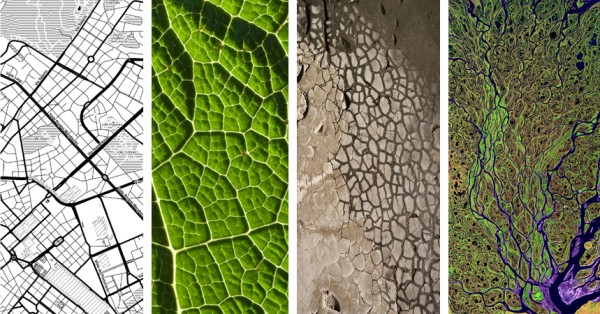
Through code and design, we explore the question of how patterns emerge in nature. How can we use these same rules of growth for design? Digital manufacturing frees us from the rigid uniformity of mass production and nature suggests a new approach to manufacturing that produces diverse results.
Morphological Diversity
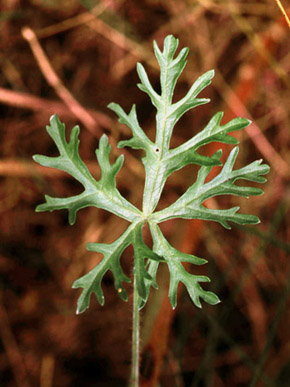
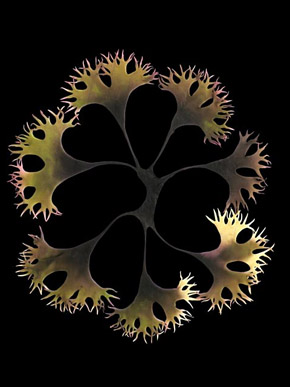
Folium is the result of a multistage digital growth process created by Nervous System based on L-systems and spatial colonization algorithms. Our system yields diverse results both in overall shape and texture. The variably branched forms of the generated Folia range from round to tree-like. Some recall the dissected forms of maple leaves while others can be likened more to the dichotomously branched forms of Chondrus crispus seaweed. Complex network patterns populate the interior of each Folium in several distinct styles that suggest leaf venation, city street grids, braided rivers, or other branched, anastomosed reticulations. The exterior boundaries influence the interior networks as they expand to fill the contours of the space available. Each specimen demonstrates a unique and dynamic interplay between its outer and inner growth systems with the result that no two shapes or patterns are alike.
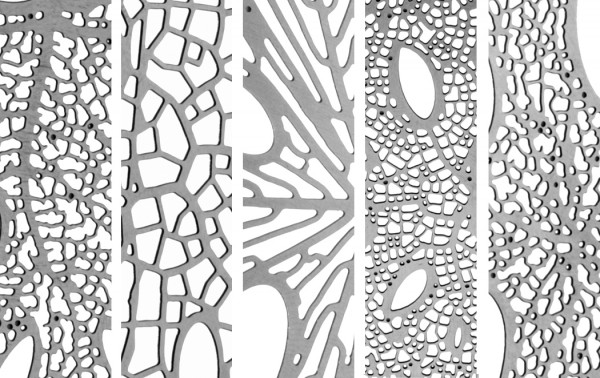
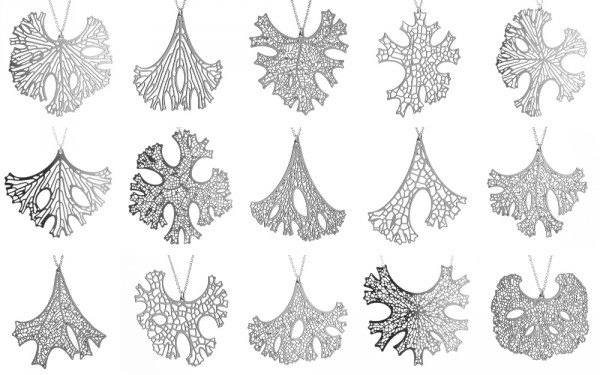
L-systems + space colonization: simulating plant growth

Our system, written in the open source program environment called Processing, is based on two algorithms developed to model plant forms. The first and oldest is L-systems. L-systems were originally created by botanist Aristid Lindenmayer in 1968 to illustrate the morphology of various plants and algae. They are descriptive rather than emergent systems, meaning they describe what occurs rather than how it occurs. In general, L-systems are used to model recursive branching structures, like those seen in trees. We use a non-deterministic L-system to define the shape of each Folium. Each growth outlines new parameters that vary the detail and shape of a branching skeleton. This skeleton is then skinned with a smooth, organic surface.
The interior network pattern is generated with a more modern algorithm now known as space colonization, which was first developed by Adam Runions of the Algorithmic Botany Group in 2005. The system was originally inspired by the auxin flux canalization theory of leaf venation, but has since been expanded to describe other space-filling, hierarchical structures such as trees. This model starts with a set of attraction points that are distributed throughout space. Growth starts at the root and grows toward the attraction points affecting it, with each attraction point’s impact limited only to its close neighbors. This process of attraction and growth repeats until all space is evenly filled. Our system explores numerous parameters and modifications of this algorithm to generate various and distinct, often unnatural results.
For more information about our work with this algorithm please see this blog post: http://n-e-r-v-o-u-s.com/blog/?p=1218
About the jewelry
Folia are available as necklaces and earrings. Each piece is photochemically etched from a thin sheet of stainless steel and measures approximately 2 x 2 inches. The necklaces come with 16-18” sterling silver or gold-filled chains, and the earrings hang from hypo-allergenic surgical steel earwires. Since every piece in the collection is one of a kind, each receives its own unique identifying number and is individually photographed.
Folium pendants in 24kt gold plated stainless steel – click here to shop
Folium Earrings in stainless steel – click here to shop
Folium Pendant in stainless steel – click here to shop

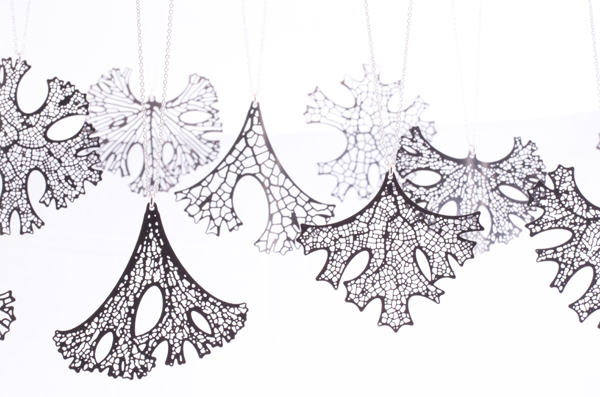
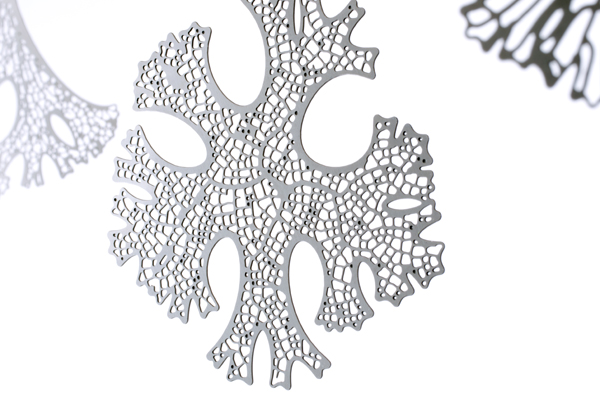
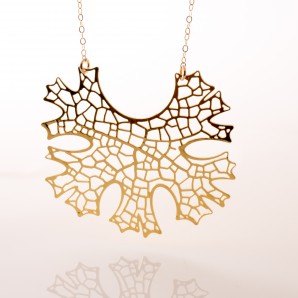
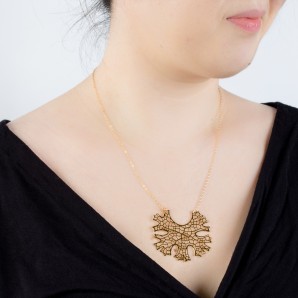
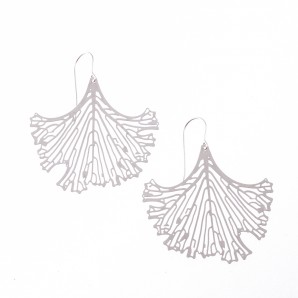
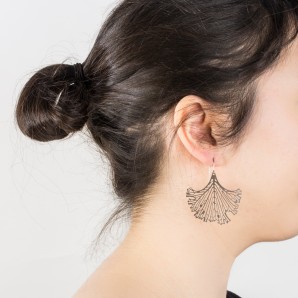

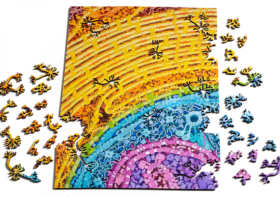
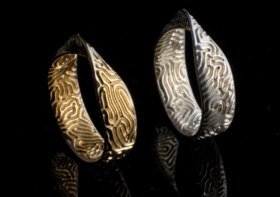
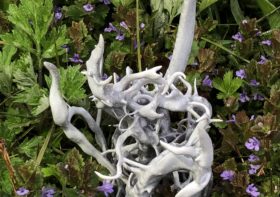
bonooobong
Awesome as always! I really like how you represent your amazing designs, I’m a newbie to processing but I’m going to try to make a similar algorithm in grasshopper, there are some really nice components to generate branching structures with L-Systems and cellular automata. The component is called Rabbit and is developed by Morphocode, check it out if you want to:
http://morphocode.com/work/rabbit/what-is/